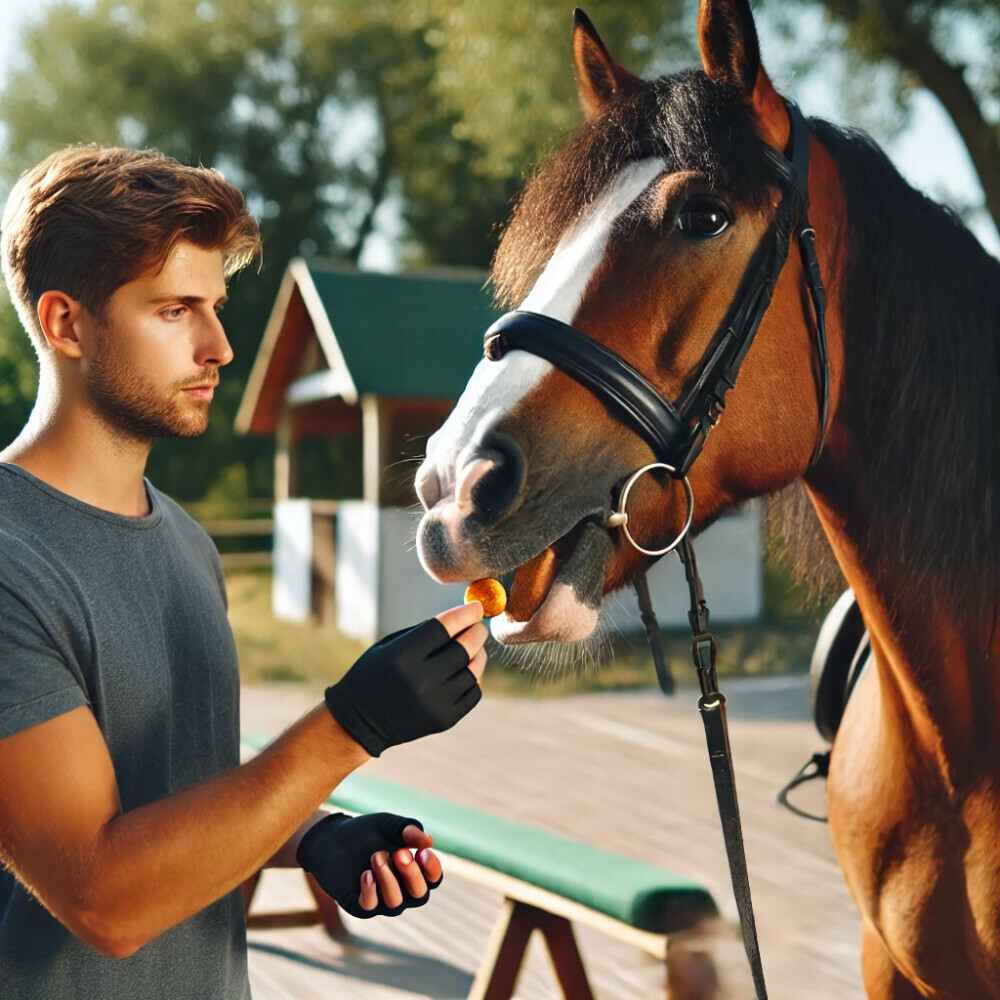Harnessing the Power of Positive Reinforcement in Horse Training

Training horses is as much an art as it is a science. One method that has gained significant attention for its effectiveness and humane approach is positive reinforcement. But what exactly is positive reinforcement, and how can it benefit both horses and their trainers? Let’s take a closer look.
Understanding Positive Reinforcement: A Brief Overview
Positive reinforcement is a technique rooted in the principles of behavioral psychology. Essentially, it involves rewarding a horse for displaying desired behaviors, which increases the likelihood that these behaviors will be repeated. Unlike traditional training methods that might rely on pressure or correction, positive reinforcement focuses on encouraging voluntary cooperation from the horse.
Benefits of Positive Reinforcement for Horses: Building Trust and Confidence
One of the most significant benefits of using positive reinforcement is the development of a strong bond between horse and trainer. Horses, like people, respond well to kindness and patience. When a horse learns that good behavior leads to rewards—be it a treat, a gentle pat, or verbal praise—it begins to associate training sessions with positive experiences. This builds trust and boosts the horse’s confidence, making it more willing to engage and learn.
Practical Tips for Implementing Positive Reinforcement in Training Routines

To effectively incorporate positive reinforcement into your training, start with small, achievable goals. Begin by identifying what your horse finds rewarding, whether it’s food, a scratch in a favorite spot, or a few moments of rest. Timing is crucial; rewards should be given immediately after the desired behavior to reinforce the connection. Consistency is key, so make sure you apply the same cues and rewards regularly.
Case Studies: Successful Outcomes with Positive Training Techniques
Several trainers have shared their success stories with positive reinforcement. For example, a rescue horse named Bella, who was initially fearful and untrusting, showed remarkable improvement when her new owner switched to positive reinforcement methods. By rewarding Bella for calm behavior and gradually increasing the complexity of tasks, Bella transformed into a confident and cooperative horse.
Another example involves a competition horse named Duke. Initially trained using traditional methods, Duke often showed signs of stress and resistance. When his trainer adopted positive reinforcement techniques, Duke’s attitude changed dramatically. He became more relaxed and performed better in competitions, demonstrating the powerful impact of this approach.
Expert Insights: What Equine Psychologists and Trainers Recommend

Leading equine psychologists and trainers advocate for the use of positive reinforcement, emphasizing its benefits for mental and physical well-being. Experts like Dr. Andrew McLean highlight that horses trained with positive reinforcement show lower stress levels and a greater willingness to participate in training activities. They argue that this method respects the horse’s natural behaviors and promotes a healthier, more enjoyable training experience.
How Positive Reinforcement Supports Better Horse Welfare
Positive reinforcement not only enhances training outcomes but also significantly improves overall horse welfare. By reducing the use of aversive techniques, horses experience less anxiety and fear. This approach fosters a more relaxed environment, where horses are free to express their natural behaviors without the constant pressure to perform. This can lead to better physical health, as stress is a known contributor to various health issues in horses.
Measuring the Success of Positive Reinforcement Strategies
Success with positive reinforcement can be measured in several ways. Behavioral changes such as increased cooperation, reduced signs of stress, and improved performance in training tasks are strong indicators. Observing your horse’s demeanor can also provide insights; a happy, relaxed horse is a clear sign that positive reinforcement is working. Additionally, keeping a training journal to track progress can help identify patterns and areas for improvement.
Addressing Common Misconceptions and Challenges

Despite its benefits, positive reinforcement is sometimes misunderstood. A common misconception is that it leads to spoiled horses that expect treats all the time. However, when applied correctly, positive reinforcement does not create dependency but rather encourages horses to work willingly. Another challenge is the initial time investment required to see results. Patience and persistence are essential, as positive changes might take longer to manifest compared to traditional methods.
Continuing Education for Trainers: Keeping Up-to-Date with Positive Techniques
The field of equine training is always evolving, and it’s important for trainers to stay informed about the latest techniques and research. Attending workshops, reading current literature, and participating in online forums can help trainers refine their positive reinforcement skills. Continuous learning ensures that trainers can provide the best possible care and training for their horses.
Encouraging a Community of Positive Horse Training Advocates
Building a community around positive reinforcement can amplify its benefits. By sharing experiences and supporting one another, trainers can foster a culture of humane and effective horse training. Online groups, local clubs, and training seminars are excellent platforms for connecting with like-minded individuals. Together, advocates for positive reinforcement can promote better practices that enhance the lives of horses and their handlers.
Positive reinforcement in horse training is more than just a technique; it’s a philosophy that prioritizes the well-being and cooperation of the horse. By understanding its principles, implementing practical strategies, and learning from experts and peers, trainers can create a more harmonious and rewarding relationship with their horses.

